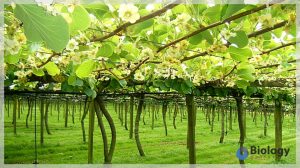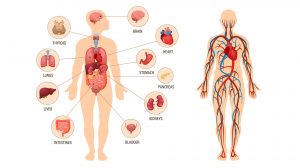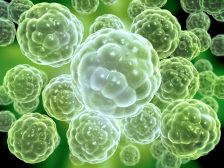Table of Contents
Definition
noun
plural: cellobioses
cel·lo·bi·ose, ˌsɛləʊˈbaɪəʊz
A disaccharide made up of two glucose molecules, and forms from the partial hydrolysis of cellulose by cellulase enzyme
Details
Overview
Carbohydrates are a major class of biomolecules that can be classified based on the saccharide constituents. A disaccharide is a carbohydrate made up of two monosaccharides that are linked together by a glycosidic bond (glycosidic linkage). Cellobiose is an example of a disaccharide carbohydrate.
Properties
Cellobiose is a white crystalline water-soluble disaccharide. It is made up of two molecules of glucose joined by β-(1-4)-glycosidic bond. Thus, it is also chemically referred to as β-D-gluco-hexopyranosyl-(1->4)- β-D-gluco-hexopyranose. Similar to the common disaccharides (e.g. maltose and sucrose), it has a chemical formula of C12H22O11.
Cellobiose is closely similar to maltose in terms of saccharide components (i.e. two glucose units). However, maltose has α-1→4 glycosidic bond as opposed to cellobiose that has β-1→4 glycosidic bond. This means that in both maltose and cellobiose, the bond occurs between Carbon(C)-1 of one glucose and C-4 of another glucose. Cellobiose is also similar to trehalose and isomaltose. They are all disaccharides made up of two glucose units. However, they differ in the form of glycosidic bonding. In trehalose, the glycosidic bond is α-(1→1). In isomaltose, the glycosidic bond is α-(1→6). Similar to maltose, cellobiose is a reducing sugar since it can turn into an open-chain form with its functional group acting as a reducing agent. This means that it can be hydrolyzed not just enzymatically but also via acid hydrolysis.
Cellobiose is similar to cellulose in having glucose constituents. However, cellulose is a polysaccharide, which means that it is made up of several monosaccharide (particularly, glucose) units joined together. Cellobiose forms when cellulose is partially hydrolyzed by the enzyme cellulase. Cellulose is a straight chain polymer of carbohydrates found in the cell walls of plants. It is made up of a linear chain of β (1→4) linked D-glucose units. Cellulase is the enzyme that helps breakdown cellulose to shorter fragments, such as cellobiose. Certain bacteria (e.g. Bacteroides cellulosolvens) have cellulases and other enzymes to metabolize cellulose and break it down to cellobiose.
Biological importance
Cellobiose occurs naturally as part of the cellulose in certain organisms (e.g. in pine needles and maize stems). Thus, it has a structural role. The presence of cellulases helps in the breakdown of cellulose into shorter chains of glucose units, such as cellobiose. Recent studies reported though that mammals have endogenous beta glycosidases that metabolize cellobiose in the small intestine.1 Humans can derive cellobiose from cellobiose-laden foods such as honey, corn syrups, certain fruits, and vegetables.
However, humans do not readily digest cellobiose. Thus, cellobiose is often used as an indicator carbohydrate for intestinal permeability in Crohn’s disease and malabsorption syndrome. This disaccharide forms as a metabolic byproduct of gut flora as they breakdown cellulose.
Supplementary
IUPAC
- (2~{R},3~{S},4~{S},5~{R},6~{S})-2-(hydroxymethyl)-6-(2~{R},3~{S},4~{R},5~{R},6~{R})-4,5,6-trihydroxy-2-(hydroxymethyl)oxan-3-yloxyoxane-3,4,5-triol
Chemical formula
Synonym(s)
- cellose
Further reading
See also
- carbohydrate
- disaccharide
- glucose
- cellulose
- cellulase
Reference
- Pubchem. (2000, January 1). Cellobiose. Retrieved from ://pubchem.ncbi.nlm.nih.gov/compound/cellobiose Link
© Biology Online. Content provided and moderated by Biology Online Editors







